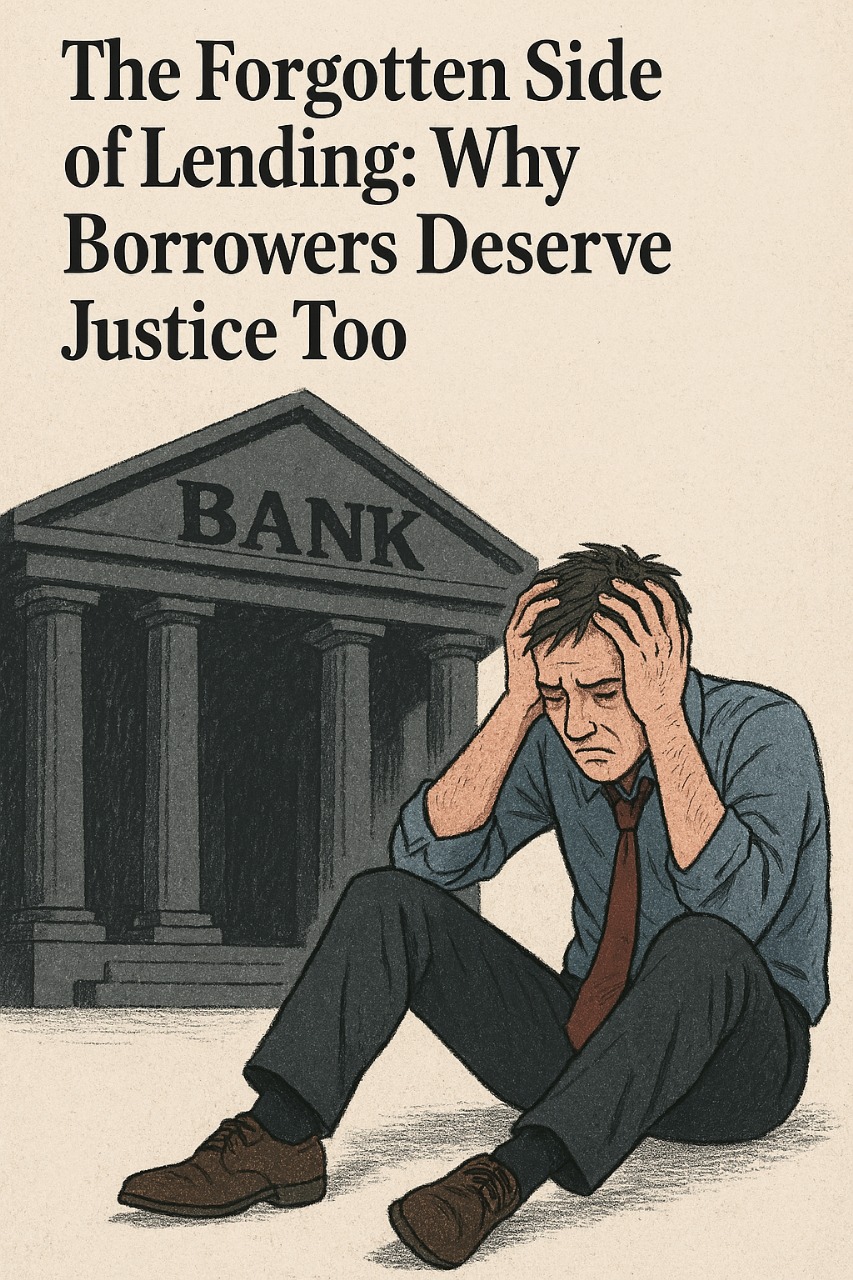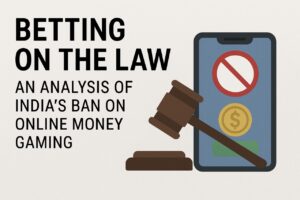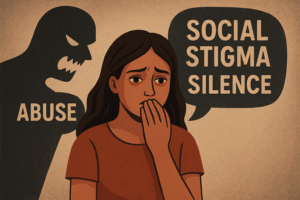1. “The Loan That Never Gave Relief” – Stories We Don’t Hear Enough
Prakash was a small-town entrepreneur with big-city dreams. He had saved for years to open a modest textile unit. Like most middle-class Indians, when his savings fell short, he went to the bank. The loan manager welcomed him with a smile, assurances, and a stack of paperwork. “Sign here, sir. You’ll have the funds in no time.”
Weeks passed. The disbursement was delayed. By the time the loan was credited, his suppliers had moved on, orders were lost, and goodwill was gone. Yet, the bank never admitted its fault. Instead, penalties for “late utilization” and hidden charges quietly appeared in his statement.
Prakash did what every borrower does: he stayed silent. He reminded himself, “They are the bank, I am just a borrower. What choice do I have?”
His story is not unique. Across India, behind every loan account number, there is a person who wants a home, an education, or a chance at entrepreneurship. But their struggles rarely make headlines. What we read are numbers: NPAs, defaults, percentages. What we do not hear enough are the stories of borrowers like Prakash, whose trust was turned into a trap.
2. When Trust Turns Into a Trap
Every loan begins with trust. A borrower signs a bundle of papers, believing the bank will stand beside them in their journey, whether it is for a home, a business, or education. The signature is not just ink on a contract; it is faith in the promise of fairness.
But most of the time, that trust becomes the very weapon used against them. The language of loan agreements is so dense that even educated borrowers struggle to understand it. Interest rates are revised without clear explanations, hidden charges quietly appear, and disbursements get delayed until opportunities are lost.
And when repayment became late sometimes because of reasons entirely outside the borrower’s control, the same bank that once welcomed them with smiles unleashes a storm of phone calls, notices, and threats.
What began as a relationship of trust soon feels like a trap. The borrower realizes too late that the scale was never balanced; the bank had all the power from the start.
3. Not Just Numbers- The Human Cost of Borrowing
Inside a bank’s ledger account, everything looks neat: principal, interest, EMI, and overdue. But behind every overdue lies a living story.
When a small shop owner misses his installment, it is often because his customers have delayed payments. When a salaried employee defaults, it may be due to an unexpected medical emergency or sudden job loss. For the bank, however, it all collapses into one word: ‘default’.
For the borrower, a default is not a statistic; it is a weight that slowly erodes dignity, sleep, and peace of mind. Parents struggle to explain to their children why they must switch schools. Entrepreneurs watch years of hard work crumble. With each legal notice, the fear of a knock on the door grows heavier.
The intent of the law was to balance recovery with fairness and compassion. Yet, in practice, the borrower’s “human story” often disappears into a checkbox, while cold numbers dictate the outcome.
4. From Support to Struggle- How the Law Gets Twisted Against Borrowers
Banks don’t just have money; they have power, the kind that comes from legal machinery. What begins as support often transforms into struggle when borrowers realize the system isn’t always neutral.
Take recovery notices, for example. Many borrowers first hear of their “default” not through a polite reminder, but through intimidating legal language that feels like a verdict before a hearing. Instead of helping people navigate delays caused by genuine hardships, like delayed disbursement, health crises, or market crashes the law is often applied in a way that amplifies the borrower’s pain.
The imbalance is sharp. On one side, banks have entire legal departments, hired counsels, and unlimited resources. On the other, a borrower has only a thin file of papers and whatever courage they can gather. The result? Even laws designed for fairness sometimes get weaponized against the very people they were meant to protect.
5. Voices That Refuse to Be Silenced – Borrowers Fighting Back
For every borrower crushed under legal notices and endless interest, there are others who decide to fight back. Courtrooms across India have witnessed individuals who dared to challenge banks, not because they had endless money, but because they had nothing more to lose.
Some go to consumer forums, arguing that delayed disbursement or unfair charges robbed them of their business and dignity. Others take their battle to social platforms, exposing the darker side of lending practices. What’s striking is not that they win every time (because often they don’t), but that they create cracks in a system that thrives on silence.
Each voice raised reminds us: borrowers are not faceless “defaulters.” They are people with dreams, setbacks, and stories that deserve to be heard.
6. Towards a Fairer Future – Rethinking the Borrower’s Place in Law
The law was never designed to stand as a shield only for capital; its purpose is to create a table where borrowers and lenders sit as equals. Somewhere along the path to tighter balance sheets, the law forgot its own story.
If we honestly wish to breathe credibility back into this industry, the following actions are non-negotiable:
- Guarantee that disbursement timelines treat the borrower’s tighter clock as seriously as the lender’s, a borrower never signs delays into the paperwork.
- Embark on serious, sustained funding for consumer forums until filing a complaint feels as ordinary and rapid as checking a balance.
- Move decisively to inscribe borrower dignity into every statute, treaty, and guideline, until citizens reclaim their voice from digital silo codes.
Because the core contract sealed between lender and borrower is, was, and will remain a contract of faith, not ledger lines. When that faith thins, gravity itself feels weakened. A lending architecture that hopes to be enduring must rediscover its own heart, the nerve that reminds capitals and codes that, in the final illumination, the law is tasked to protect lives, not ruin them.
-BY Ritika Agarwal



